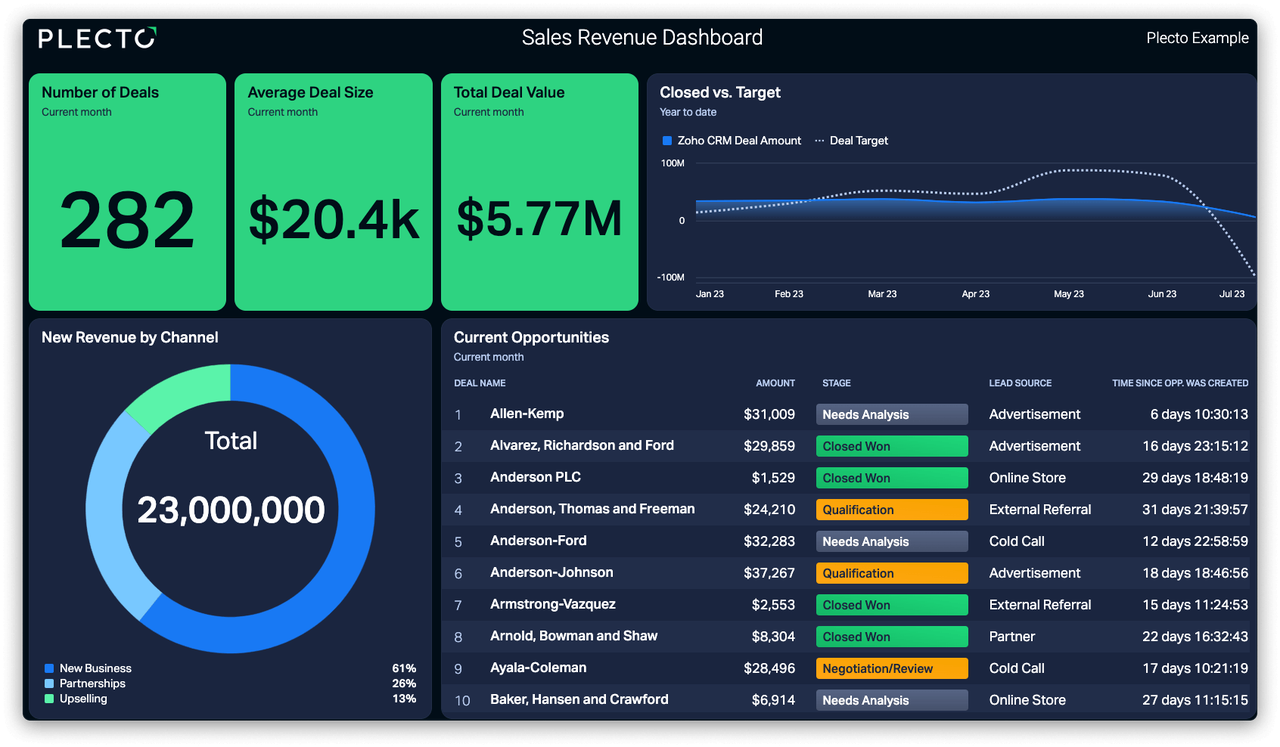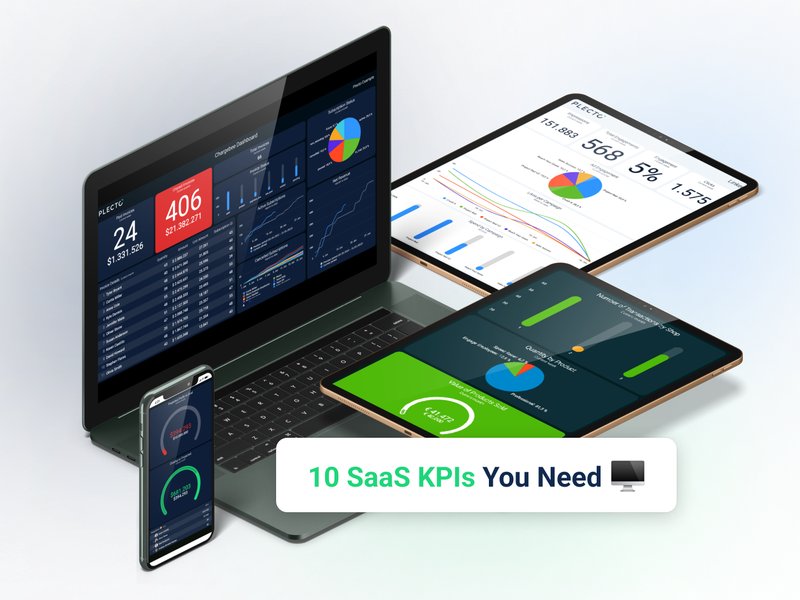Tracking the right financial business metrics helps companies measure and analyze their financial state, empowering them to identify the efforts necessary to get on track – or hopefully stay on track with a more data-driven approach to financial management.
The following five financial KPIs are a solid starting point.
5 Important Financial Business Metrics
Tracking carefully chosen financial KPIs can help companies keep close tabs on their business performance – and identify potential issues before it’s too late.
These five financial business metrics are an excellent place to start for companies wanting to become more data-driven in their financial operations.
1. Sales Growth
To stay viable over the long term, company revenue should grow year over year. This is one of the most important financial business metrics for predicting future success. Monitoring sales growth can help identify areas of concern before they become irreparable. An off month isn’t the end of the world, but if revenue is on a downward or stagnant trend month after month, it could be time to look into why. Minimally, sales growth should be tracked monthly – but it’s also important to keep eye on how revenue is tracking against the company’s quarterly and annual goals.
Use this formula to calculate it: net sales for the current period – net sales for the previous period ÷ net sales for the previous period x 100 = sales growth rate
If this formula results in a negative number, there could be trouble on the horizon.
2. Accounts Receivable Turnover
A high accounts receivable turnover indicates that most of your customers are paying their bills on time. A low turnover could indicate that your billing, payment, and accounting processes need some work. Acting on this KPI is more of an art than a science. If your company has enough working capital (see below), giving customers longer to pay could reduce churn and help with customer retention. The main thing to look for with this one of our five financial KPIs is whether the majority of customers are paying on time. If too many customers are taking too long to pay, you might eventually encounter cash flow issues.
3. Working Capital
All businesses need cash flow in order to operate. Working capital is the “cash on hand” that’s available to finance daily operations. Understanding the company’s working capital is imperative for future-planning decisions, like new hires and equipment purchases. It can also highlight gaps in funding that could pose challenges to moving the company forward.
Use this formula to calculate it: current assets – current liabilities = working capital
While having a high amount of working capital shows that the company is doing well, having too much cash on hand could indicate that the company isn’t investing enough back into the business to help it grow. Negative working capital could be a clue that it’s time to aggressively pursue new customers, increase prices, or apply for a business loan.
Build your first dashboard.
Start your 14-day free trial today
4. Operating Expense Ratio
Companies are in business to turn a profit, and most will probably want to scale up in the future. The next of our financial business metrics, operating expense ratio, compares the company’s operating expenses to its total revenue. Keeping expenses down is a great way to increase profits, especially during economic downturns when increasing sales might be more difficult than when the economy is doing well. This KPI could be especially important if a company is looking to attract new investors, who will want to know how the company’s revenue measures up against its operating costs.
5. Customer Acquisition Cost
A steady flow of new customers is critical to long-term success, but acquiring them can be expensive. We’ll end our list with one of the most important financial metrics for marketing – customer acquisition cost. This important financial business metric can be helpful in tracking marketing ROI and identifying places in need of adjustment. If cold-calling isn’t working, maybe it’s time to focus on other channels – for example, CPC advertising, content marketing, or social media campaigns. Keeping a close eye on customer acquisition costs will help you identify the most effective channels for bringing in new customers, so you can invest your marketing budget where it counts.
Use this formula to calculate it: cost of sales and marketing ÷ number of new customers = customer acquisition cost
Use Automated Reporting to Track These Financial KPIs
Tracking and acting on these five financial business metrics will start you on the data-driven path to better financial management. From marketing to sales – and everything in between, Plecto enables you to schedule and generate automatic reports with custom KPIs and real-time data to help you stay on top of your company’s financial state.
Take your finance tracking to the next level. Sign up for a free 14-day trial today!




